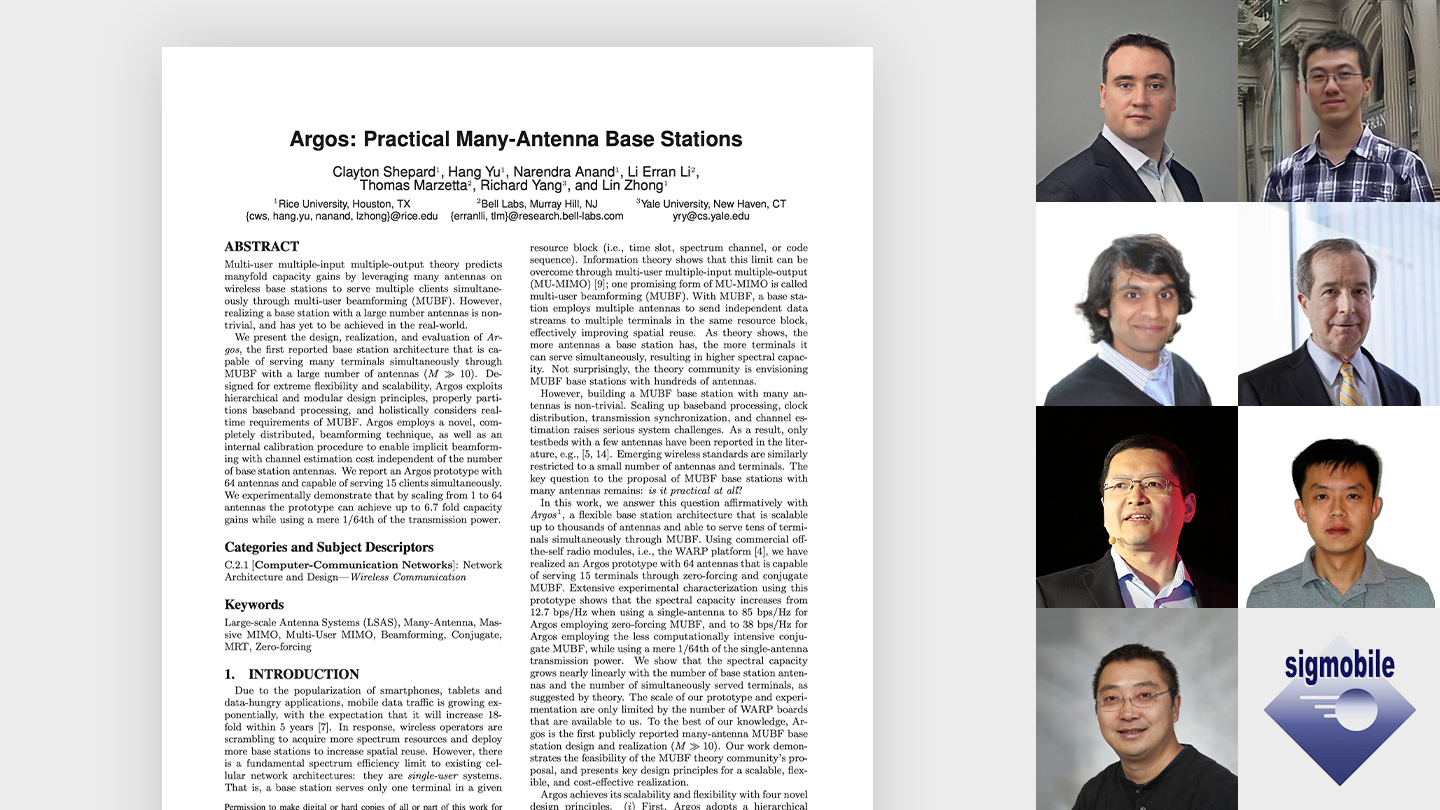Erran Li, an applied scientist with Amazon Web Services, was recently awarded the 2022 SIGMOBILE test-of-time award for "Argos: Practical many-antenna base stations”, a paper he co-authored in 2012.
SIGMOBILE is an international mobile computing professional organization for scientists, engineers, executives, educators, and students. The test-of-time award recognizes papers that have had a sustained and significant impact in the SIGMOBILE community over at least a decade.
The paper, which Li wrote with Clayton Shepard, Hang Yu, Narendra Anand, Thomas Marzetta, Richard Yang, and Lin Zhong, addressed a challenge of creating an optimal base station for the deployment of several antennas, a crucial challenge at the time owing to the rapid growth of mobile data traffic. The authors’ proposed solution is utilized by mobile providers around the world.
In 2012, as the paper notes, there was “a fundamental spectrum efficiency limit to existing cellular network architectures: they are single-user systems. That is, a base station serves only one terminal in a given resource block (i.e., time slot, spectrum channel, or code sequence).”
The solution: a concept known as multi-user beamforming (MUBF). “With MUBF,” the authors wrote, “a base station employs multiple antennas to send independent data streams to multiple terminals in the same resource block, effectively improving spatial reuse.”
The challenge: scaling those base stations to the number of antennas needed — often in the thousands — to handle demand.
“At the time, mobile was gaining a lot of momentum, people were talking about 5G and how we would actually accommodate the exponential growth of mobile traffic,” Li said. “We needed some really big ideas on the technology front to accommodate high-bandwidth applications.”
Li, who was working at Bell Labs (then known as Alcatel-Lucent Bell Labs), noted that while Marzetta’s research had shown the possibility to scale to thousands of antennas on a single base station, no one had demonstrated the idea could actually work.
“We proved that we can scale this up to 15 terminals talking to 64 Antennas, and from there we could keep scaling it,” he explained. They were also able to demonstrate that scaling could be achieved without sacrificing performance.
The result of the work by Li and his co-authors was Argos1, which drew its name from the many-eyed giant of Greek mythology.
Argos is “a flexible base station architecture that is scalable to thousands of antennas and able to serve tens of terminals simultaneously through MUBF.”
“It's a great honor to receive the award,” Li said. “It was a think big idea that very few people thought would work in practice, even though the theory was there. We took a bold idea, proved it could work in practice, and it’s gratifying to know this work helped accelerate the mobile technology revolution.”



















